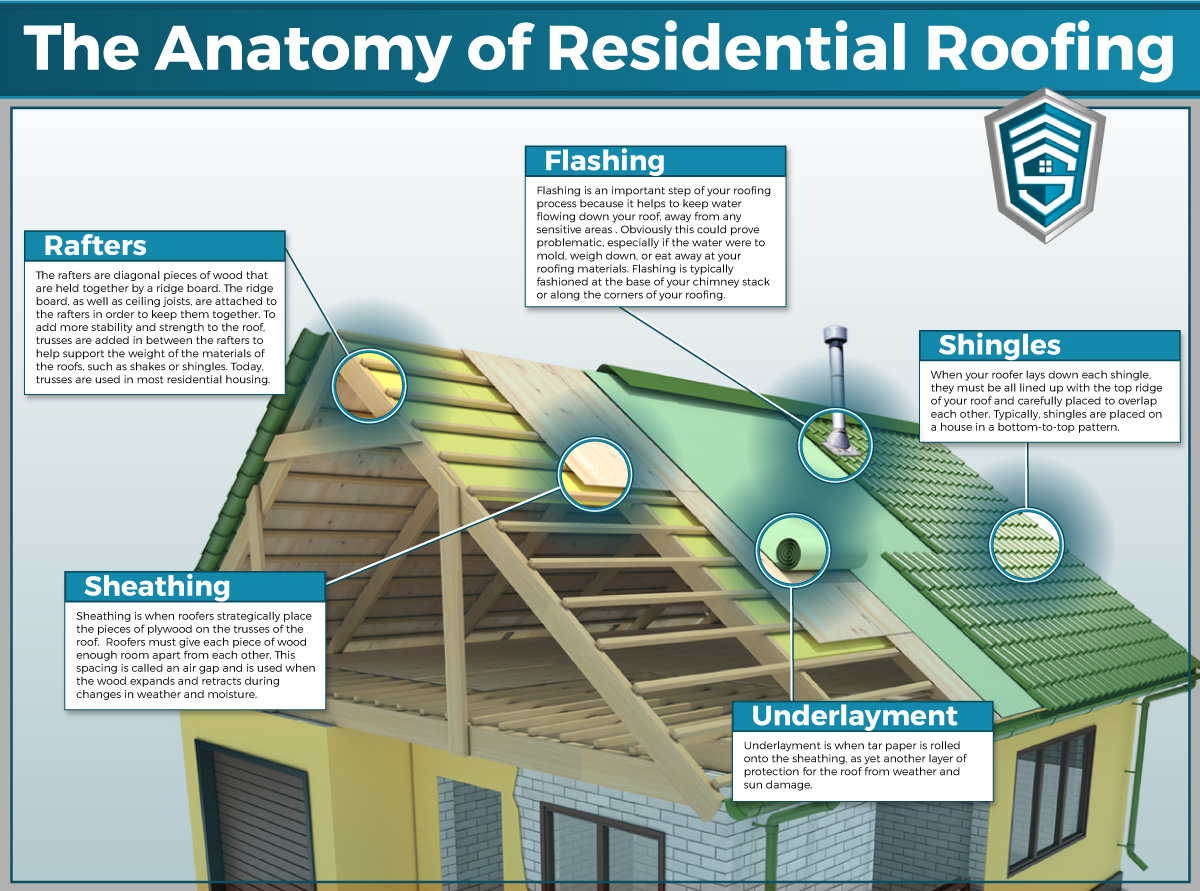Falling Short To Attend To Roof Air Flow May Create Considerable Damage; Discover The Important Variables That Contribute To A Successful Installation And Safeguard Your Monetary Dedication.
Falling Short To Attend To Roof Air Flow May Create Considerable Damage; Discover The Important Variables That Contribute To A Successful Installation And Safeguard Your Monetary Dedication.
Blog Article
Content Create By-Caldwell Walls
When you're tackling a roofing job, you might not think much about roofing system air flow, however it's even more essential than you realize. Efficient air flow assists control temperature level and moisture in your attic, protecting against issues like mold and structural damage. By understanding how to develop and mount a well balanced ventilation system, you can improve power effectiveness and extend the lifespan of your roof products. So, what are the vital elements to think about throughout installation that can make all the distinction?
Relevance of Roofing System Ventilation
Roof ventilation plays a vital role in preserving the general wellness of your home. By permitting fresh air to flow through your attic, it aids regulate temperature and dampness levels. This equilibrium is vital to stop warm buildup during hot months, which can result in raised power prices as your a/c burns the midnight oil.
Moreover, proper air flow substantially reduces the danger of moisture-related concerns like mold and mildew and mold. If humidity levels climb, your home's architectural integrity can be jeopardized, resulting in costly repair work. You wouldn't want to deal with rotting wood or deformed roof covering products, right?
In addition, sufficient air flow prolongs the lifespan of your roofing system. When heat and dampness are kept in check, your roofing system can perform ideally, stopping early deterioration. This indicates less migraines and costs down the line.
How Roof Covering Ventilation Works
Effective roofing air flow depends on the all-natural movement of air to create an equilibrium in between intake and exhaust. When you install vents, you're essentially permitting fresh air to enter your attic while enabling warm, stagnant air to get away. flooring installation shavano park aids control temperature and moisture degrees, stopping concerns like mold and mildew development and roofing damages.
gutter installer san antonio , commonly located at the eaves, draw in awesome air from outdoors. Meanwhile, exhaust vents, located near the ridge of the roofing system, allow hot air rise and departure. The distinction in temperature creates a natural air flow, known as the stack result. As warm air rises, it creates a vacuum cleaner that pulls in cooler air from the reduced vents.
To optimize this system, you require to ensure that the consumption and exhaust vents are appropriately sized and placed. If the intake is limited, you will not accomplish the desired ventilation.
Likewise, insufficient exhaust can catch warm and wetness, resulting in potential damage.
Secret Installation Considerations
When setting up roofing system ventilation, several key considerations can make or damage your system's effectiveness. Initially, you need to evaluate your roof covering's layout. The pitch, shape, and products all affect air flow and ventilation choice. Make https://ehsdailyadvisor.blr.com/2019/06/roofer-hit-with-1-8-million-osha-penalty/ to choose vents that match your roof covering type and local environment problems.
Next, think about the positioning of your vents. Preferably, you'll desire a well balanced system with intake and exhaust vents placed for optimum airflow. Place consumption vents low on the roofing and exhaust vents near the top to motivate an all-natural circulation of air. This setup aids protect against wetness accumulation and advertises energy performance.
Do not forget about insulation. Correct insulation in your attic room avoids warmth from leaving and keeps your home comfortable. Guarantee that insulation does not obstruct your vents, as this can hinder air flow.
Lastly, think about upkeep. Choose ventilation systems that are easy to access for cleansing and inspection. Regular maintenance guarantees your system remains to work successfully in time.
Verdict
To conclude, roof covering ventilation is essential for an effective setup. By making sure correct air flow, you can stop warmth accumulation and dampness issues that lead to pricey damage. When you tactically setting intake and exhaust vents, you enhance energy efficiency and extend the life expectancy of your roof covering. Keep in mind, a well-ventilated roofing system not just safeguards your financial investment however also improves your indoor air top quality. So, focus on ventilation to ensure a resistant and affordable roof for your home.
